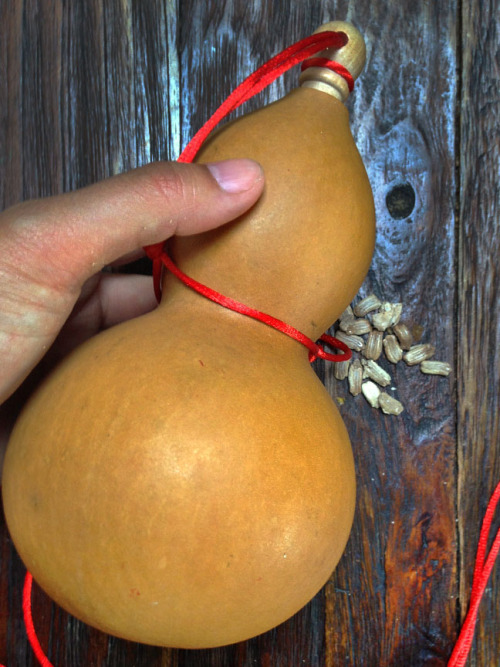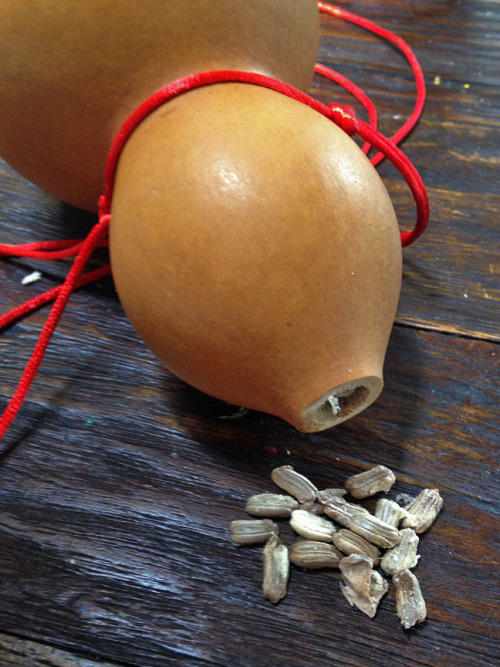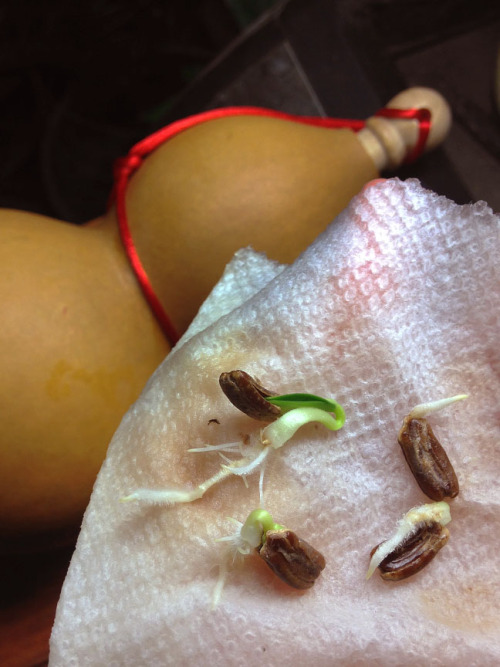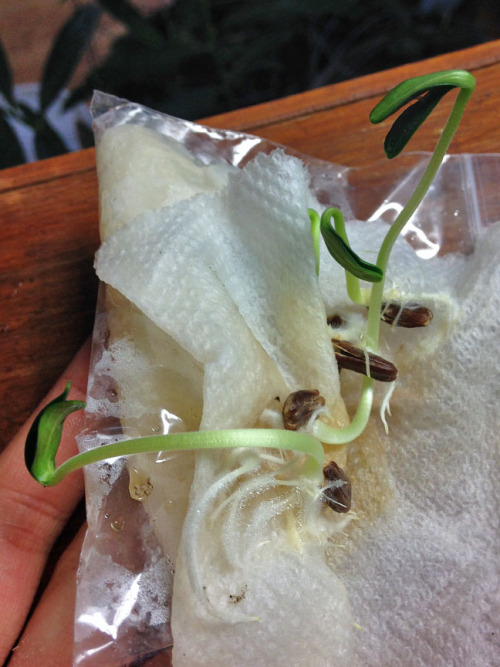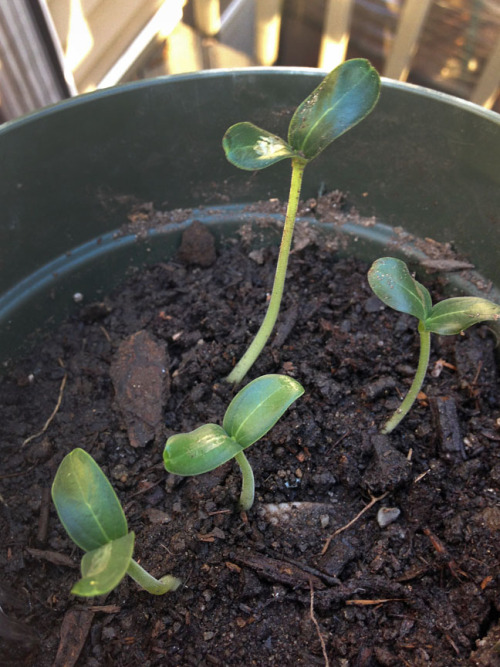kihaku-gato:hqcreations:hqcreations:hqcreations:Regrowing Bottle GourdsAfter a recent business trip
kihaku-gato:hqcreations:hqcreations:hqcreations:Regrowing Bottle GourdsAfter a recent business trip to China, my old man brought me back an interesting little present: a bottle gourd. In the old days, these gourd canteens were used to carry small pellets of medicine or booze…both healing in my opinion. This gourd has been outfitted with a wooden plug, but much to my - shake shake shake - surprise, the gourd was still filled with seeds..AND THEY ARE VIABLE! I’m so excited to grow these into mature fruits next year. Ever since I made these gourd containers following instructions posted by @hyggehaven, I’ve had this repressed obsession to transform large gourds into dishes, scoops, containers and - OMG I can’t even! This is one primitive craft I really want to perfect one day.Update on the Bottle GourdsI don’t think it’s gonna make it guys…I transplanted the starters out to the garden this Spring, a rather forgettable location actually. I really didn’t think I was going to have any luck growing gourds and so paid no attention. All of a sudden, in the height of summer, the gourds exploded in growth. Beautiful, thick, and velvety leaves and tough vines over took the garden box. I can’t believe I got fruit, and I actually still have one hot tamale hanging on to sweet sweet life in these 40 degree lows in Zone 7a.I’m suppose to harvest when the stem turns brown, but it’s already late October and we’ll be hitting the 30s soon. I’m pouting because I really wanted to cure this and turn it into a container thingy :-(Update on Bottle Gourd CuringIt took me so long to grow and harvest these Chinese bottle gourds, but I never thought it would take almost just as long to get the darn thing dried! Before the frost hit last year, I took in my beautiful gourd to moonlight as a dining table centerpiece for at least 3 months, before she started its natural curing and molding process. In the outdoor shed she stayed for another three months before I deemed her fully dried and ready for a cleaning. However…I am never doing this again. I don’t know why, but of all the gross homesteading tasks I’ve ever had to do, cleaning this mold crusty moldy gourd is by far the most stomach churning for me. I will keep this gourd around as a decorative piece or perhaps more as a sordid reminder for myself to keep away from curing gourds.Maybe not the case to give up just yet. I 100% agree that cleaning a moldy gourd is probably one of the grossest and most deterring things ever from the practice (those tutorials I’m reading rn that say “The mold won’t harm the shell and will actually leave interesting patterns on the shell” I think either haven’t done it before or have a stomach made of goddamn steel).It may slow down the process of drying/curing the gourd (and perhaps you did do this but just in case you didn’t I’m gonna suggest it anyways) but at least one article/page from the Wilson County Center from 2009 says “Wiping shells with the bleach water solution will prevent mold from forming”, which would make sense; it’s not like you’re eating these gourds, the shells are naturally hard, and bleach is pretty much the go-to ultimate disinfectant even among horticulturalists so- that’s an idea if it hadn’t been done already?If I could avoid the grossness of the mold myself I would be trying to grow bird/water gourds myself XD I have absolutely no use for them (and frankly my growing season may be a tad too short for them if even you in zone 7 struggled getting any ripe in time- I’m 2 zones colder than you for crying out loud lmao) but I personally find them very charismatic. If I were to find smaller fruited cultivars I’d be even trying to make christmas tree decorum out of some. -- source link
Tumblr Blog : hqcreations.tumblr.com
#hqcreations#gourds#cucurbita
